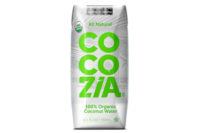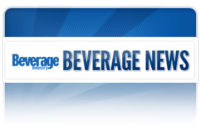Although consumers might have classified coconut water as an “exotic” beverage in the past, it’s quickly becoming more mainstream. In fact, the number of global coconut water launches has increased more than 540 percent in the last five years, according to Chicago-based market research firm Mintel. In 2013 alone, the number of coconut waters released in the United States increased 92 percent from 2012, according to Innova Market Insights’ Innova Database.
| Jump to: |
North America dominated the market with 35 percent of the launch activity in 2012, but Europe followed closely behind with 34 percent of new coconut water launches, Mintel reports. Coconut water releases in both of these areas demonstrated double-digit growth compared with 2008. The Asia-Pacific region accounted for 14 percent of launches, which is a 5 percentage point increase from 2008, the market research firm adds. However, Latin America saw a significant decline in new coconut water introductions, with 16 percent of new coconut water product launches in 2012 compared with 61 percent in 2008, it states.
In the United States, consumers’ acceptance of electrolytes in beverage applications has helped the segment’s growth, according to Jonny Forsyth, global drinks analyst at Mintel. “Coconut water contains naturally high levels of electrolytes, including potassium, calcium and magnesium, which have made it popular as a sports drink for natural foods consumers,” he said in a statement. “Coconut water is doing particularly well in the U.S. because both sports recovery drinks and vitamin-enhanced waters are well-established — much more so than in other countries — meaning that people already buy into the benefits of electrolytes in a beverage.”
In the U.S. market in 2012, value sales of coconut water rose more than 100 percent, notes Virginia Lee, senior research analyst with Euromonitor International, Chicago. The segment continued its strong performance last year but at a slower rate. Value sales of coconut water increased less than
40 percent last year, she says.
“The strong performance is attributable to coconut water producers marketing the beverages as ‘nature’s electrolytes’ — a natural way to rehydrate after a workout and replenish the body without chemical additives,” Lee says. “Its low calorie content compared to other 100 percent juices also boosts its appeal among the health-conscious.”
Come one, come all
Young, affluent athletes remain the primary demographic for coconut water; however, the health appeal and expanded availability of coconut waters have broadened its reach, Lee says.
“The affluent athlete audience has expanded to include non-athletes and older consumers in the past few years as coconut water branched out from health food stores to supermarkets, convenience stores and drug stores,” she explains. “The reduction in price points along with wider distribution has also served to expand the consumer base.”
Demonstrating the expanding reach of the segment, Epicurex LLC launched Cocozia coconut water, which targets athletes and sports aficionados but also appeals to health-conscious consumers who are concerned about genetically modified and processed foods, it says.
“We see a growing demand for products that are strictly non-GMO,” said Wade Nevill, vice president of marketing for the North Miami Beach, Fla.-based company, in a statement. “We wanted to assure our customers that Cocozia is 100 percent all-natural. That’s why we are Non-GMO Project Verified. The coconuts we use have no artificial growth hormones, nor have any other ingredients been genetically altered.”
“We see a growing demand for products that are strictly non-GMO." |
Other consumer packaged goods successes, such as the rise of coconut milk as a dairy alternative for yogurt-style products, also have aided in enhancing coconut water’s healthy image in the beverage industry, adds Natalie Tremellen, marketing analyst with Innova Market Insights, the Netherlands. Overall, coconut water has become popular among dieters and consumers concerned about general wellness, she notes. This even impacts the children’s drinks market.
Last summer, New York-based Vita Coco introduced a line of coconut waters formulated especially for children between the ages of 2 and 8. With 35 calories and 8 grams of sugar in each 6-ounce serving, Vita Coco Kids has fewer calories and approximately half the sugar of many other children’s beverages, the company says. In addition, the drinks do not contain artificial sweeteners and are high in potassium. The line is available in Apple Island, Paradise Punch and Very Cherry Beach flavors.
Both children and seniors are good targets for coconut waters, Innova’s Tremellen says. For kids, they can be marketed as a healthy alternative to sugary juices and beverages; for seniors, they can be appealing because they offer a natural source of minerals and electrolytes, she explains.
Big help from big names
Additionally, celebrity endorsements have showcased coconut water as an on-trend health beverage for a wide range of consumers, Tremellen adds.
For instance, Zico, a brand of Atlanta-based The Coca-Cola Co., and Los Angeles-based O.N.E. Coconut Water both are using Olympic athletes to help promote their products this year. Vita Coco also is capitalizing on the celebrity culture. Most recently, the brand partnered with baseball player Josh Hamilton to promote brand awareness, and in 2012 it created a tropical-fruit-flavored coconut water with music artist Rihanna.
These three brands — Zico, O.N.E. and Vita Coco — dominate the U.S. coconut water market, Euromonitor’s Lee notes.
In addition to celebrity endorse-ments, coconut water sales also have been helped by high-profile investments from beverage companies, Mintel’s Forsyth said in a statement.
The Coca-Cola Co.’s Venturing and Emerging Brands (VEB) business unit announced toward the end of 2013 that it had acquired the outstanding ownership stake in Zico Beverages LLC. The Coca-Cola Co. first invested in the company in 2009, and in 2012 it purchased a majority stake in the brand. Earlier last year, the coconut water joined Coca-Cola’s distribution system, making the product available across the United States and Canada.
“When we made our investment in Zico, we did so because we saw it as a burgeoning premium brand with the potential to be a significant leader in a high-growth category,” said Deryck van Rensburg, president and general manager of Coca-Cola North America’s VEB business unit, in a statement. “Over the past four years, we have watched the coconut water category see an impressive spike in revenue and household penetration and Zico solidify its position as one of the leading brands in this category. With our acquisition, we plan to innovate in all aspects of the consumer experience and increase both velocity and distribution to position Zico for even more growth. This announcement is the sign of a continued beginning for the brand, with more resources, support and cachet to come.”
Similarly, PepsiCo first invested in O.N.E. coconut water in 2009 and increased its investment to hold a majority stake in the company the following year.
After the most recent investment, former PepsiCo Beverages Americas Chief Executive Officer Massimo d’Amore said in a statement: "Coconut water is one of the fastest-growing categories in the U.S. beverage market and one in which we see a great deal of potential. Our investment in O.N.E. is an investment in the future.”
Flavor trends
As Zico’s former Chief Executive Officer Mark Rampolla told Beverage Industry in its December 2011 issue, its Natural coconut water variety is its best seller, but Chocolate quickly rose to the No. 2 spot after its launch earlier that year. Euromonitor’s Lee notes that chocolate is one of the most popular flavors for coconut water.
The coconut water segment also reflects this trend, with plain or “unflavored” coconut water taking the top spot on Innova’s list of the top flavors of coconut waters launched in the United States in 2013. Unflavored coconut water accounted for 32 percent of product launches last year, the market research firm reports. For instance, The Double Cola Co., Chattanooga, Tenn., launched not-from-concentrate, unflavored Minoku Coconut Water, and Miami-based Just Coco USA LLC imported unflavored Just Coco coconut water last year.
Pineapple, green tea, mango and orange flavors rounded out the remaining top flavors of coconut waters launched in 2013, Innova notes.
However, some brands are straying from the typical tropical fruit flavors. Australian company Mode Drinks entered the coconut water market last year with Coco Fresco Pure Coconut Water. This line of coconut waters switches things up with fruit flavors including Strawberry, Watermelon and Passion Fruit. Coco Fresco Pure Coconut Water also comes in an unflavored Natural variety.
Furthermore, Taste Nirvana put a savory twist on coconut water when it launched Real Coconut Water with Thai Chili Extract last summer. The all-natural beverage is made with Thailand-originated chilies and young coconuts, the company says.
Coffee flavors also are trending well within the segment, Innova’s Tremellen says.
Coco Cafe, a registered trademark of New York-based All Market Inc., expanded its brand of coconut water café latte beverages with Mocha and Vanilla flavors in early 2013. Coco Cafe Mocha blends cocoa with natural coffee extract, reduced-fat milk and fresh coconut water, while Coco Cafe Vanilla blends natural vanilla with natural coffee extract, reduced-fat milk and fresh coconut water.
Also showcasing the coffee and coconut water trend, San Francisco-based Zola introduced Zola Coconut Water with Espresso last fall. A 17.5-ounce can contains five essential electrolytes, more potassium than a banana, and 125 mg of caffeine, the company says.
“We expect to see more flavor varieties for coconut water, as plain coconut water can be [an] acquired taste for many Americans,” Euromonitor’s Lee says. “More blends with other fruit juices and coffee will be launched on the market.”







